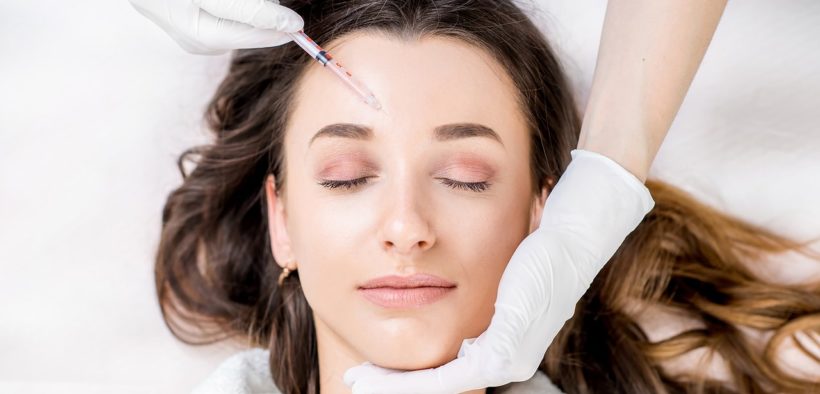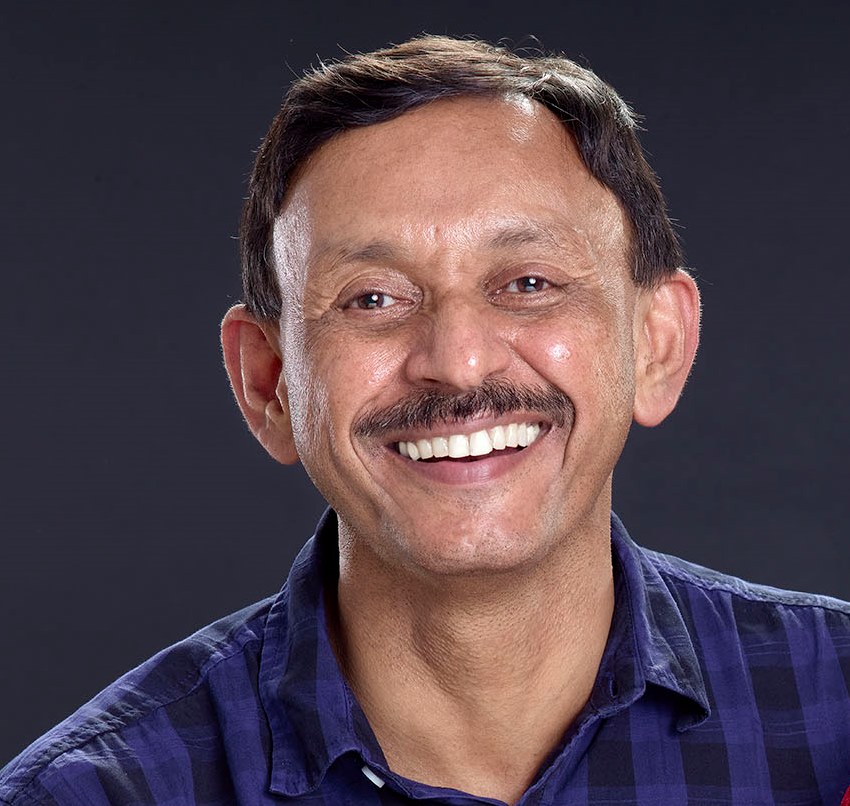Reconstructing Life

Dr Subramania Iyer, Professor, and Chairman of plastic and reconstructive surgery, head and neck surgery, and oncology and craniomaxillofacial surgery at Amrita Institute of Medical Sciences, Kochi, talks about 3D modeling in reconstruction and the importance of organ donation
BY DEEPTI DEEPAK VARMA
What are the challenges associated with reconstructive surgery after cancer?
In many cancers, reconstructive surgery plays a huge role. The areas where reconstruction becomes mandatory are head and neck, breast and extensive resection of the soft tissue in the limbs, abdominal wall, or melanomas of the skin. The main worry for patients when we talk about the surgery for cancer is about the loss of function. Another is that of disfigurement, especially in head and neck, and breast. With a mastectomy, which is the usual treatment carried out for breast cancer, even though people don’t express it, the worry of disfigurement lurks in their minds. The first challenge of a reconstructive surgeon lies in removing worries and fears from the mind of the patient.
What is the success rate of reconstruction surgery? What is the percentage of function a patient will be able to achieve?
It all depends on the type of patients and the type of reconstructive surgery. The success rate on a general basis goes beyond 90 percent, and with an experienced team, you can expect even up to a 95 percent success rate. The ability to restore whatever is lost in its same form is less, but the functional deficit of speech and all other functions can be restored to about 80-90 percent.
What are the myths associated with reconstructive surgery?
There are several myths associated with reconstructive surgery., Foremost is that reconstruction can mask recurrences or that it will make follow-up difficult. This is felt more for breast reconstruction as well as upper jaw reconstruction. Several studies show that reconstruction does not mask recurrences and newer imaging and surveillance technologies make the follow up safe. Another myth is that people think it is very expensive. If you take mastectomy or head and neck, the surgical cost of reconstruction will obviously be slightly higher, but it is not extravagant and is comparable to any simple surgical procedure wesley financial cancel timeshare. Another issue pointed out against the use of reconstruction is that it is not available in many centers. This was true around 20–25 years ago. But nowadays, most hospitals have trained teams comprising surgical oncologists and reconstructive surgeons who offer dedicated work in this field. Lastly, the greatest deterrent is the perception of the necessity of reconstruction among the patient and relatives. The functional or aesthetic restoration takes second place in terms of priority. The fact is that there is life beyond cancer. Right now, it is not the cure alone, but the quality of the cure that matters. Hence, the emphasis should be not on the cure alone but on a cure with a good quality of life afterward, for which reconstructive surgery plays a big role.

3D MODELLING IS EXCELLENT, ESPECIALLY IN HEAD AND NECK SURGERY. IT IS MAINLY USED FOR BONY STRUCTURES, LIKE UPPER AND LOWER JAWS. IT HELPS GIVE YOU A PRECISE PLAN OF HOW YOU ARE GOING TO REMOVE THE TUMOUR.
Dr. Subramania Iyer, Professor, and Chairman of plastic and reconstructive surgery,, Amrita Institute of Medical Sciences, Kochi
newer imaging and surveillance technologies make the follow up safe. Another myth is that people think it is very expensive. If you take mastectomy or head and neck, the surgical cost of reconstruction will obviously be slightly higher, but it is not extravagant and is comparable to any simple surgical procedure. Another issue pointed out against the use of reconstruction is that it is not available in many centers. This was true around 20–25 years ago. But nowadays, most hospitals have trained teams comprising surgical oncologists and reconstructive surgeons who offer dedicated work in this field. Lastly, the greatest deterrent is the perception of the necessity of reconstruction among the patient and relatives. The functional or aesthetic restoration takes second place in terms of priority. The fact is that there is life beyond cancer. Right now, it is not the cure alone, but the quality of the cure that matters. Hence, the emphasis should be not on the cure alone but a cure with a good quality of life afterward, for which reconstructive surgery plays a big role.
Does one have to take medication lifelong after reconstructive surgery?
Absolutely not! Reconstructive surgery is a routine surgery where you take tissue from your own body and then refashion it to the shape of the lost tissue. It is the patient’s own tissue that is being used. The only medication the patient needs is that of routine postsurgical care, which is not different from any other surgical procedure.
How does 3D printing aid in the reconstruction?
3D modeling has been excellent, especially in the head and neck; we do it regularly now. 3D modeling has been available widely only over the last couple of years. It is mainly used for bony structures, like the upper jaw and lower jaw. CT scans are taken which is imported into software, which then reconstitutes a 3D digital image. The 3D digital image is then transferred to a printer where the printer puts out materials in bits and fills in, step by step, to recreate the facial bones. So, you can have models of the entire skull, upper jaw, lower jaw, or isolated parts made… This model helps you do precision surgery as well as to plan the reconstruction. You know beforehand the defect dimensions and contours, allowing recreation of the lost bone with the bones from other parts of the body. This saves time as well as brings in quality.
What are the myths associated with organ donation?
If you look at the organ donation scene across the world, in our country, it is abysmally low, owing to factors like lack of education, lack of awareness, lack of infrastructure, etc. One eligible donor (a brain-dead person) can save the lives of at least 7–8 people, with two kidneys, a liver, a heart, a tongue, and a small intestine being made available to those who are dying due to failure of these organs. The main obstacle here is that, even if you, as a person, want to donate, at the time of your death, unless your kith and kin agree to it, the organ donation will not happen. So, the acceptance of organ donation by the family is one big problem that arises from the fact that people around you at that time may think it is not the right thing to do. No religion says that it should not be done, it is just misinterpreted by people saying that religion forbids it. People also think that the body will be mutilated by organ donation, which is again a false assumption. Another myth is that organ donation and the transplant is a big money-making racket. One reason for this is the fact that organ transplants occur extensively in private sector hospitals and its availability in the government sector is not high due to resource constraints. Liver transplant, whether in public or private, is expensive due to the operating time, materials and personnel needed. But this should not lead to blaming that transplants are only for rich! All tertiary care government institutions should take up organ transplants and more organ donations should emanate from public sector hospitals.
As a country, we do face an acute shortage of organ donors. What do you think can aid doctors and medical institutions in getting the word across about the importance of organ donation?
There are a lot of measures that need to be taken. First of all, we all have to understand that organ donation is one of the noblest things you can do and that we face a shortage in the area, and things need to improve. This message has to circulate throughout the population, maybe even starting with education at the school level, and through intensified government-sponsored public awareness programmes. The next step is making clear who exactly is eligible for organ donation, and the willingness to do it. So, even if I pledge my organs and sign up for it, it is not enough. In the end, it is the family that decides; so, in case you are pledging your organs, you must let your kith and kin know, and ask them to honor that wish of yours. Also, someone in the family must have the noble thought—when it comes to a brain-dead person or a person who is almost dying—that the person is dying anyway, let their life save another’s, and that’s the best memory we can have about them. This idea should be perpetuated across the country by means of educational programmes, social activism, etc. And the government should make all cases of brain death (in the country) notifiable to the central and state agencies responsible for organ donation and transplant, to make the entire process better and more effective
Also read about
















